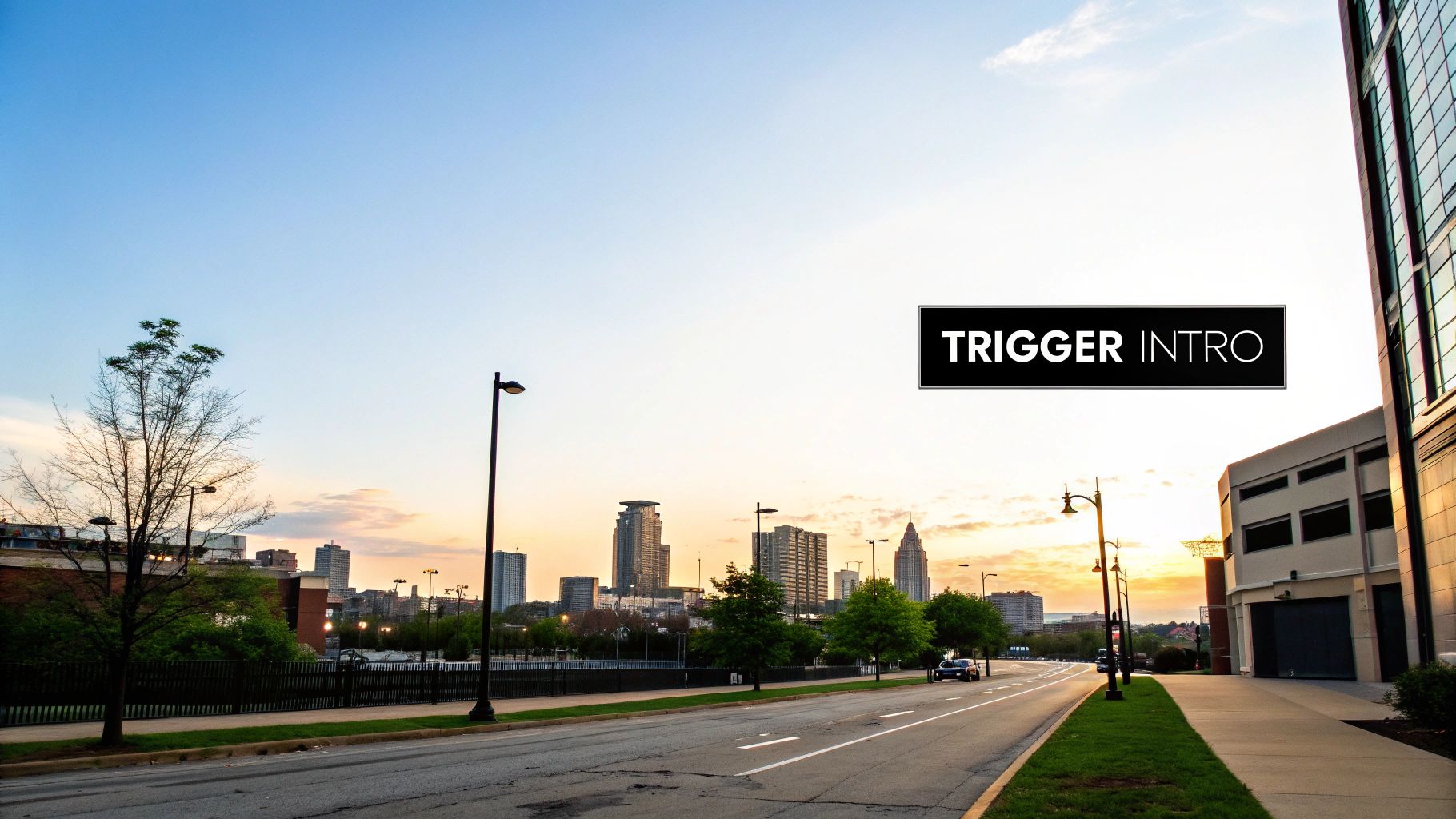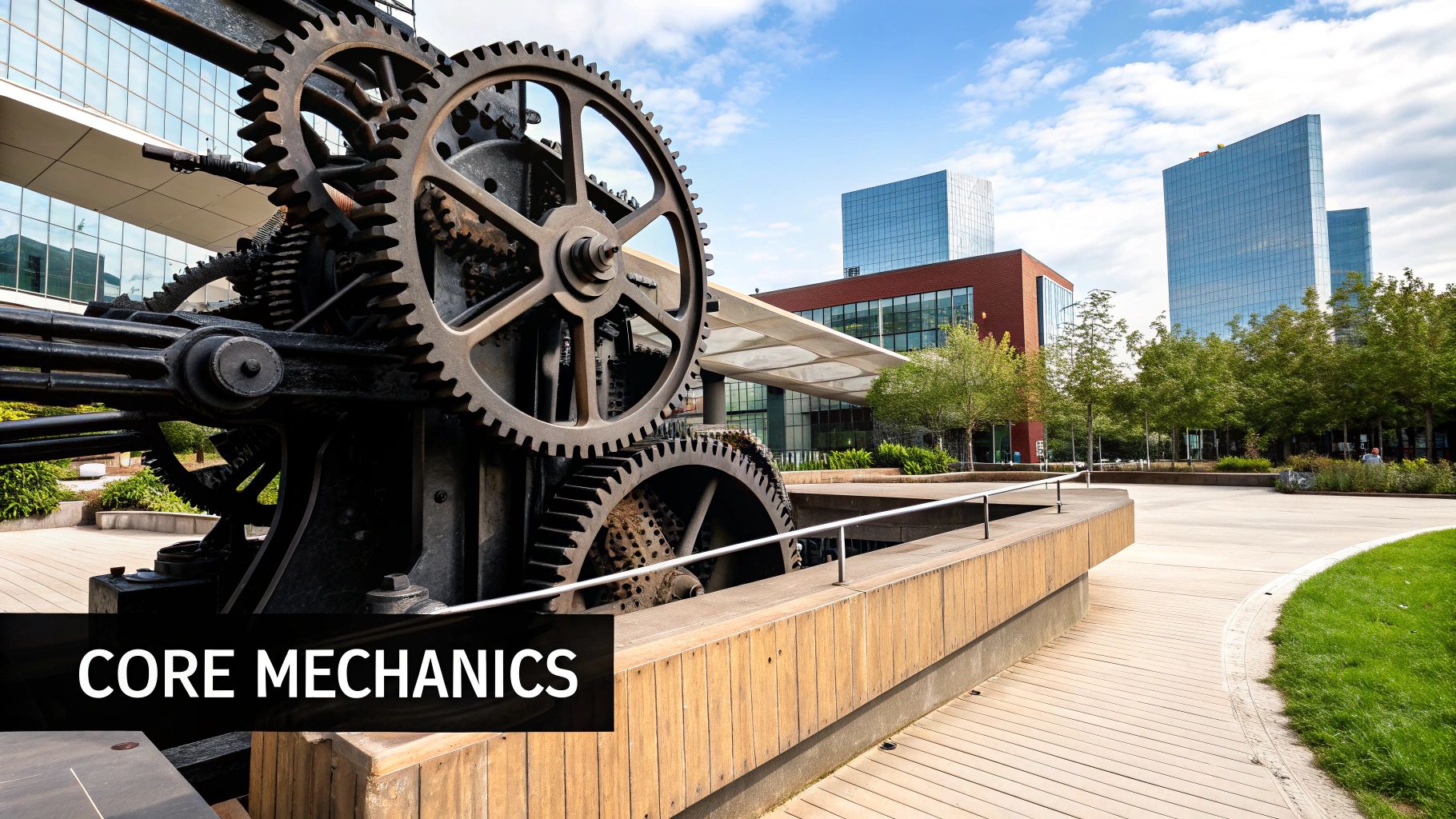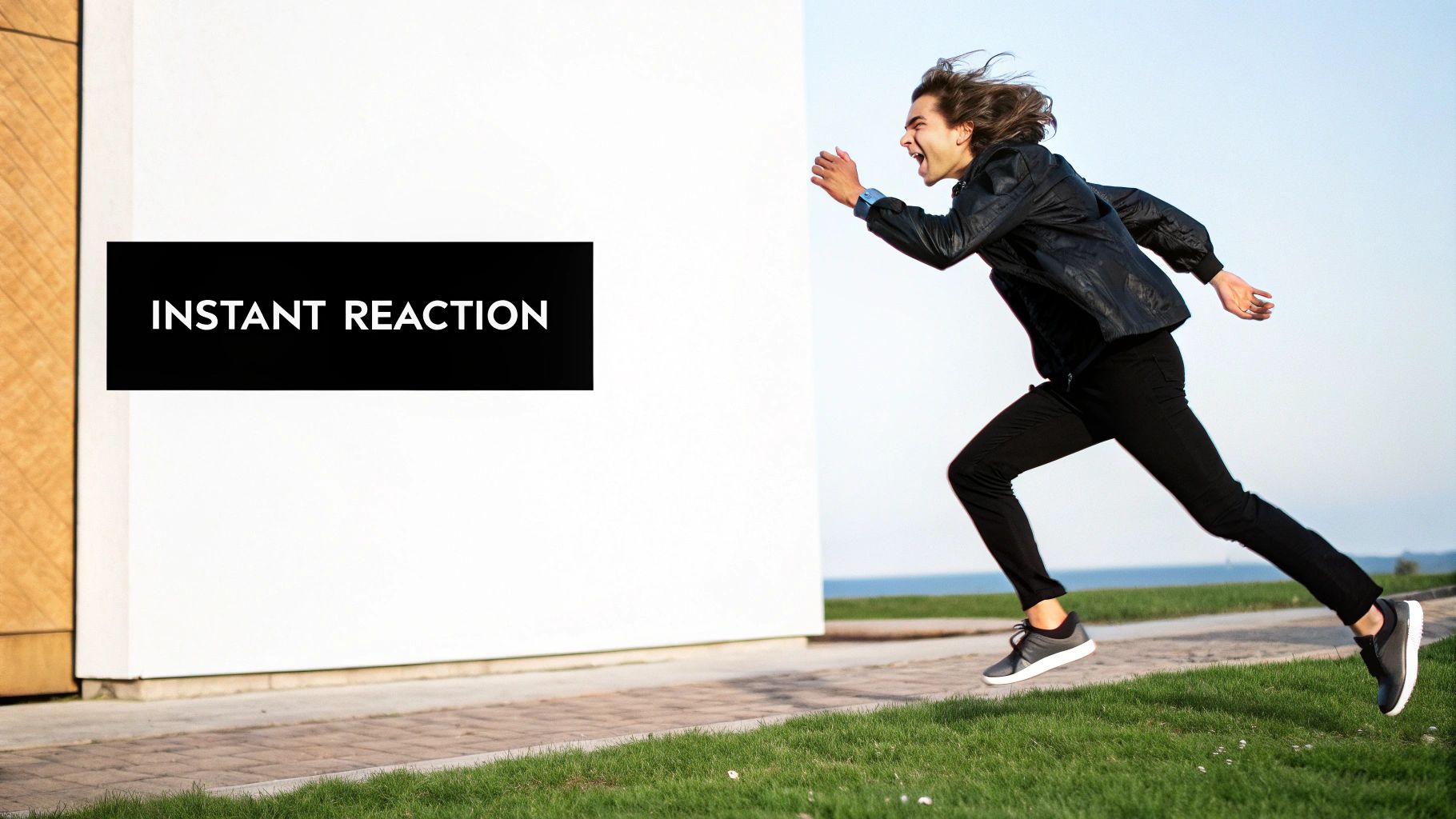The Art and Science of WoT Trigger Mechanics

In the heated battles of World of Tanks (WoT), raw power alone won't guarantee victory. It's the quick thinking, the perfect timing, the trigger control that sets apart the skilled players. Understanding the game's shooting mechanics is key to success. This includes everything from shell trajectory and penetration to the crucial element of reload timing. These factors combine to create a dynamic combat experience where mastering the "WoT trigger" leads to greater success.
Trigger Discipline: The Mental Game
Trigger discipline, the ability to resist firing impulsively, is a mental game as much as a physical one. That brief pause before firing can be the difference between a powerful hit and a missed shot. Imagine a heavy tank approaching. Firing too early might mean missing a vulnerable spot, or having your shot bounce harmlessly off their armor.
Patience and precise timing are essential, especially during intense combat. This control allows for improved target acquisition and follow-through, increasing your chances of hitting those vital shots.
Tank Class and Trigger Response
Different tank classes demand different trigger responses. A fast light tank needs quick reflexes and rapid shots. On the other hand, a tank destroyer waiting in ambush requires a more deliberate, measured approach. Improving your trigger performance in WoT involves understanding various tools and techniques, such as those found in PPC optimization techniques.
Understanding these nuances and adapting your trigger discipline to your vehicle significantly impacts your effectiveness, affecting optimal engagement range and tactical positioning. Interestingly, World of Tanks maintains a strong player base with roughly 18,914 concurrent players. You can find more detailed statistics here. This speaks volumes about the game's enduring popularity.
Mastering Trigger Mechanics Through Understanding Your Vehicle
Mastering WoT's trigger mechanics means deeply understanding your vehicle’s strengths and weaknesses. Reload time, aim time, and shell dispersion all influence your trigger response. A tank with a slow reload, like some heavy tanks, requires greater trigger discipline to make each shot count. Autoloaders, with their rapid-fire ability, allow for a more aggressive style, but controlled bursts are still important to avoid depleting your ammunition too quickly. This understanding translates into better decision-making in battle.
To illustrate the varying trigger responses needed for each tank class, let's examine the following table:
WoT Trigger Response Time by Tank Class This table compares the average trigger response times across different tank classes, helping players understand the handling differences between vehicle types.
| Tank Class | Average Reload Time | Aim Time | Dispersion | Best Trigger Discipline |
|---|---|---|---|---|
| Light Tank | Fast (e.g., 5 seconds) | Fast (e.g., 2 seconds) | High | Quick, Reactive |
| Medium Tank | Moderate (e.g., 8 seconds) | Moderate (e.g., 2.5 seconds) | Moderate | Balanced, Adaptive |
| Heavy Tank | Slow (e.g., 12 seconds) | Slow (e.g., 3 seconds) | Low | Deliberate, Patient |
| Tank Destroyer | Slow (e.g., 15 seconds) | Slow (e.g., 3.5 seconds) | Low | Calculated, Precise |
| Artillery | Very Slow (e.g., 30 seconds) | Very Slow (e.g., 5 seconds) | High | Predictive, Strategic |
This table showcases the different reload times, aim times, and dispersion values impacting trigger discipline. Notice the contrast between the light tank's quick, reactive approach and the tank destroyer's measured precision.
Optimizing Trigger Response for Each Class
Optimizing your trigger finger for each tank class becomes a true skill. It’s knowing when to hold back, when to unleash a volley, and when to save that crucial follow-up shot. Mastering the WoT trigger transforms you from reacting to situations to proactively controlling them, dictating the engagement and consistently shifting the battle in your favor.
Accelerating Your WoT Trigger Response Time
Improving your trigger finger in World of Tanks isn't just about clicking faster; it's about clicking smarter. This means optimizing your entire setup, from your physical environment to your in-game settings, to shave precious milliseconds off your reaction time. These milliseconds can mean the difference between a devastating hit and a missed opportunity, ultimately impacting your win rate.
Optimizing Peripherals and Settings
Top WoT players understand that their peripherals are an extension of their skills. They meticulously adjust their mouse sensitivity and keybindings to achieve optimal performance. A lower DPI (dots per inch) setting on your mouse, for example, can increase aiming precision. Strategically placed keybindings for crucial actions, like switching ammunition types, can significantly improve your reaction time in intense battles.
- Mouse Sensitivity: Experiment to find a DPI that balances quick target acquisition with precise aiming. Many professional players favor a lower DPI, using larger mouse movements for rapid turns and smaller adjustments for fine-tuning their aim.
- Keybindings: Map frequently used actions, such as firing and using consumables, to easily accessible keys. This can drastically reduce reaction time compared to default keybindings.
Developing Muscle Memory and Hand-Eye Coordination
Exceptional trigger control in WoT, like any skill, requires dedicated practice. Competitive players use specific exercises to develop their muscle memory and hand-eye coordination. Think of it like a musician practicing scales – consistent, repetitive drills can drastically improve speed and accuracy.
- Training Rooms: Practicing against stationary targets in training rooms can help you refine your aim and become comfortable with your chosen sensitivity settings.
- Focus on Weak Spots: Concentrate on hitting specific weak spots on different tanks to enhance your ability to land critical hits under pressure.
The Impact of Your Environment
Even your physical comfort influences your WoT trigger response time. A comfortable chair and proper desk height can minimize fatigue and improve focus, especially during longer gaming sessions. This is much like a professional athlete ensuring they have the correct equipment and support to perform at their peak.
- Ergonomics: Make sure your gaming setup promotes good posture and reduces strain on your hands and wrists.
- Minimize Distractions: A focused environment allows for quicker reactions and better decision-making in the heat of battle.
Training Regimens for Enhanced Trigger Efficiency
Tournament champions often employ structured training regimens to progressively enhance their trigger skills. These regimens might include timed drills, scenario-based practice, and regular performance analysis.
- Progressive Difficulty: Start with simpler exercises and gradually increase the complexity as your skills improve.
- Analyze Replays: Reviewing your gameplay can reveal areas where you can refine your trigger control and decision-making under pressure. This allows you to learn from mistakes and hone your skills over time, transforming your WoT trigger into a precise weapon on the battlefield.
Measuring and Improving Your WoT Trigger Metrics

Behind every great World of Tanks victory lies a player with exceptional trigger skills. This section dives into the crucial connection between your trigger finger and your in-game success. We'll explore how seemingly minor improvements in aiming, target acquisition, and follow-through can significantly boost your overall performance. It's not about speed clicking; it's about clicking strategically and accurately.
Key Performance Indicators for Trigger Skill
Several key performance indicators (KPIs) offer direct insight into your World of Tanks trigger skills. These metrics provide a valuable understanding of your strengths and weaknesses, helping you focus your training efforts effectively.
- Hit Ratio: This basic metric measures the percentage of shots that connect with your target. A higher hit ratio indicates better aiming and target acquisition.
- Average Damage Per Shot: This KPI tracks the average damage inflicted with each successful hit. Optimizing damage per shot requires understanding weak spots and selecting the appropriate ammunition.
- Damage Per Minute (DPM): DPM measures your total damage output over time. It reflects your aiming, shot selection, reload management, and target prioritization.
- Survival Rate: While not directly related to aiming, survival rate reveals much about your battlefield awareness and tactical decision-making. Staying alive longer allows you to deal more damage and contribute significantly to your team's victory.
These KPIs provide a clear, measurable way to monitor progress and identify areas for improvement. For example, a consistently low hit ratio may suggest adjusting your mouse sensitivity or incorporating target acquisition drills into your practice.
Tracking Improvement With In-Game and Third-Party Tools
World of Tanks provides built-in statistics tracking to help you monitor your trigger performance. In addition, several third-party websites and apps offer more in-depth analysis and tracking. These resources can give you a deeper understanding of your performance trends, highlighting where you excel and where you need work. This data-driven approach empowers you to tailor your practice sessions and focus on specific aspects of your gameplay. WN8 (Weighted Normalization of Rating VIII) is a particularly important statistic. High WN8 scores, such as PeterLustig79's 6244.99, indicate exceptional gameplay. WN8 assigns players to skill brackets, like 'Unicum' or 'Super Unicum,' creating a highly competitive environment. Learn more on WoT-Life.
Let's look at how WN8 relates to other trigger-related metrics.
To illustrate this connection, consider the following table:
WN8 Rating Brackets and Trigger Efficiency This table shows the correlation between WN8 rating brackets and trigger-related performance metrics.
| WN8 Rating Bracket | Avg. Shot Accuracy | Hit-to-Damage Ratio | Reaction Time (ms) | Win Rate Impact |
|---|---|---|---|---|
| <500 (Very Bad) | 40% | 0.8 | 400 | -5% |
| 500-1000 (Bad) | 45% | 0.9 | 350 | -2% |
| 1000-1500 (Below Average) | 50% | 1.0 | 300 | 0% |
| 1500-2000 (Average) | 55% | 1.1 | 250 | +2% |
| 2000-2500 (Above Average) | 60% | 1.2 | 200 | +4% |
| 2500-3000 (Good) | 65% | 1.3 | 150 | +6% |
| 3000+ (Great/Unicum) | 70% | 1.4 | 100 | +8% |
As you can see, higher WN8 ratings correlate with improved trigger-related metrics, indicating a strong connection between these factors and overall success in World of Tanks.
Case Studies: Transforming Performance Through Trigger Discipline
Numerous players have drastically improved their WN8 ratings by concentrating solely on trigger discipline. These success stories highlight the significant impact even small adjustments can make. One player, for instance, saw a major improvement in their hit ratio simply by reducing their mouse sensitivity. This change allowed for more controlled aiming and, as a result, more consistent damage output. Another player focused on refining their target prioritization, learning to swiftly identify and eliminate high-threat targets. These nuanced changes in trigger technique can have a profound impact on your overall game.
The Power of Small Adjustments
Ultimately, enhancing your WoT trigger performance boils down to consistent, incremental adjustments and regular practice. By carefully analyzing your metrics, pinpointing your weaknesses, and applying focused training strategies, you can transform your trigger finger into a precise weapon. This translates to more victories, improved WN8 ratings, and a more enjoyable gaming experience.
Situational WoT Trigger Techniques That Win Battles

In World of Tanks (WoT), mastering the trigger is more than just point and click. It's about adapting to the battlefield's constant shifts and knowing the right approach for every encounter, from close-range brawls to long-range sniping. Let's dive into these situational techniques to boost your win rate.
Close-Quarters Combat: Controlled Aggression
Close-quarters combat in WoT demands speed and precision. Pre-aiming is crucial. Try to predict where your opponent will be and position your reticle accordingly. This shaves off precious seconds, allowing you to fire the instant they appear. Avoid panic shooting. Short, controlled bursts are far more effective, especially when ammo is limited.
Ridge-Line Warfare: Peek-a-Boom Tactics
Ridge lines provide great cover and the perfect setting for peek-a-boom tactics. Expose just enough of your tank to fire, then quickly retreat to reload. Trigger discipline is key here; resist the urge to overextend and expose yourself. This controlled approach maximizes damage while minimizing risk. Predictive firing can also be effective if you anticipate your enemy's return.
Long-Distance Sniping: Patience and Precision
Long-distance sniping requires a different mindset. Patience is paramount. Wait for the ideal shot, aiming for weak spots. Factor in shell drop and travel time, especially when targeting moving tanks. One well-placed shot can cripple or destroy an opponent, making trigger discipline crucial. Understanding shell velocity and trajectory is vital for long-range hits.
World of Tanks boasts a huge player base, with over 8,756,324 subscribers and approximately 12,478 daily players across different platforms. You can find more detailed stats here. This highlights the game's widespread popularity and active community.
On-the-Move Engagement: Leading Your Target
Firing accurately while moving is challenging. You need to lead your target, anticipating their movement and aiming ahead. This takes practice and an understanding of your tank's handling and gun characteristics. Stabilizing your aim is also essential. Vertical stabilizers and certain crew skills from the World of Tanks website can greatly improve your accuracy on the move, allowing you to maintain effective fire while maneuvering.
Adapting to Opponent Classes and Battlefield Conditions
Effective trigger control in WoT also means adapting to different opponent classes. Facing a heavily armored heavy tank requires a different strategy than engaging a lightly armored scout. Target weak points, use the right ammo, and adjust your engagement distance based on your opponent's strengths and weaknesses. Battlefield conditions like terrain and visibility also significantly impact your trigger technique. Firing through dense foliage might require adjusting your aim or using different ammunition. Engaging targets at different elevations requires compensating for shell drop.
Mastering Advanced Techniques: Drills and Intuitive Gameplay
Experienced clan war veterans often use drills to refine their situational trigger techniques. These drills might involve practicing specific scenarios, like engaging multiple targets at varying distances or mastering quick target acquisition. The goal is to integrate these advanced techniques into your intuitive gameplay, letting you react instinctively to the ever-changing flow of battle. Consistent practice builds muscle memory and quick decision-making, vital for success in high-pressure situations. This allows you to quickly assess the situation, choose the correct trigger technique, and execute it effectively.
Breaking Bad WoT Trigger Habits That Cost You Matches
Even veteran World of Tanks (WoT) players sometimes develop bad habits that can negatively impact their performance. These often go unnoticed and can range from firing too early to panicking under pressure. This section will help you identify these common trigger pitfalls and provides strategies to improve your gameplay and achieve more consistent wins.
Premature Firing: The Cost of Impatience
One of the most frequent mistakes is premature firing. This happens when a player fires before their gun is fully aimed, leading to missed shots and lost opportunities. Picture this: an enemy tank exposes a weak spot for a brief moment. A hasty shot fired a fraction of a second too early misses, wasting a crucial chance to inflict damage.
Developing patience and waiting for the reticle to fully settle on target is essential. This focused approach significantly improves accuracy, maximizing damage and boosting your team's chances of victory.
Panic Shooting: Losing Control Under Pressure
Another detrimental habit is panic shooting, a typical response in stressful situations. When facing multiple enemies or a sudden attack, players might fire rapidly and inaccurately in a desperate attempt to survive.
This impulsive firing is rarely effective, often wasting valuable ammunition without causing much damage. Maintaining composure and prioritizing targets is key. Concentrating on one enemy at a time and taking well-aimed shots drastically increases your chances of hitting your mark and surviving the engagement.
The Psychology of Trigger Mistakes: Battle Stress and Revenge Mentality
Trigger mistakes in WoT often originate from psychological factors like battle stress and a revenge mentality. Under pressure, players might abandon their tactical plans and fall back on impulsive actions. The urge to retaliate after being hit can also lead to reckless behavior and poor trigger control.
Recognizing these psychological triggers is the first step toward managing them. Practicing mindfulness techniques, like taking deep breaths during intense gameplay, can help you stay focused and disciplined. This self-awareness enables players to make rational decisions, enhancing their combat effectiveness even in challenging circumstances.
Developing Self-Awareness and Corrective Techniques
Skilled WoT players cultivate strong self-awareness during battles. They identify their personal trigger tendencies and implement strategies to correct them. This might involve consciously pausing before firing, practicing target acquisition exercises, or reviewing replays to pinpoint areas for improvement. This ongoing self-assessment and refinement are vital for transforming frustrating habits into consistent, positive results.
For instance, a player prone to panic shooting might adopt a "three-second rule," pausing for three seconds before firing in difficult situations. This short pause allows for clearer thinking and more accurate shots, considerably improving their combat performance. This self-awareness and the implementation of personalized corrective techniques are crucial for reaching your full potential in World of Tanks.
Optimizing WoT Trigger Performance Through Equipment

Beyond practicing your skills, the equipment you select significantly impacts your World of Tanks (WoT) trigger effectiveness. This discussion examines how various components like modules, consumables, and crew skills can elevate your firing performance. We'll delve into how these options modify your trigger parameters and identify the best combinations for diverse playstyles.
Modules: Fine-Tuning Your Tank's Firing Capabilities
Modules directly influence your tank's gun handling, and thus, your trigger effectiveness. A Vertical Stabilizer, for example, dramatically reduces gun dispersion while moving, enabling more accurate shots on the move. This is particularly useful for medium tanks and heavily armored vehicles. An Enhanced Gun Laying Drive speeds up aiming time, letting you acquire targets faster.
- Vertical Stabilizer: Minimizes aim bloom when moving or traversing the turret. This is crucial for accurate snapshots and on-the-move shooting.
- Enhanced Gun Laying Drive: Accelerates aiming time, allowing for quicker target acquisition. This is a huge advantage for heavy tanks or tank destroyers in ambush positions.
- Improved Ventilation: Offers a small but universal boost to all crew skills, indirectly enhancing gun handling, aiming, and reload speed.
The right module combination is key for optimizing your tank’s trigger potential. A mobile medium tank, for example, benefits significantly from pairing a Vertical Stabilizer with an Enhanced Gun Laying Drive.
Consumables: Boosting Performance in Critical Moments
Consumables offer temporary performance boosts that can turn the tide of battle. Large Repair Kits and First Aid Kits keep your tank and crew operational, while Food provides a small boost to all crew skills. Even Small Food can provide a marginal, yet helpful, boost. These seemingly small improvements can enhance your trigger response, aiming speed, and reload time.
- Food: Improves all crew skills, resulting in better aiming speed, reload time, and accuracy.
- Large Repair Kit and First Aid Kit: Keeping your tank and crew functional maintains optimal performance.
Using consumables wisely can significantly improve your survivability and damage output, particularly in longer battles.
Crew Skills: Shaping Your Tank's Performance
Crew skills are a long-term investment in your tank's performance. Skills like Snap Shot and Smooth Ride directly improve gun handling and accuracy. Sixth Sense provides crucial early warning of enemy detection, allowing you to reposition and prepare for engagement.
- Snap Shot: Reduces dispersion during turret rotation. This allows you to land more accurate shots after quick turns.
- Smooth Ride: Reduces dispersion while moving, enhancing accuracy on the move. Combining Smooth Ride with a Vertical Stabilizer can further enhance this benefit.
- Brothers in Arms: Provides a bonus to all crew skills, further refining gun handling, aiming, and reloading.
Loadout Recommendations for Different Playstyles
Optimizing your loadout depends on your playstyle and tank class.
Aggressive Flanker
- Modules: Vertical Stabilizer, Enhanced Gun Laying Drive, Improved Ventilation
- Consumables: Food, Large Repair Kit, First Aid Kit
- Crew Skills: Snap Shot, Smooth Ride, Brothers in Arms
Disciplined Sniper
- Modules: Gun Laying Drive, Improved Aiming, Camouflage Net
- Consumables: Food, Large Repair Kit, First Aid Kit
- Crew Skills: Concealment, Deadeye, Designated Target
By strategically choosing equipment and training your crew, you can significantly improve your WoT trigger performance. This leads to more consistent damage, higher win rates, and a more enjoyable gaming experience.